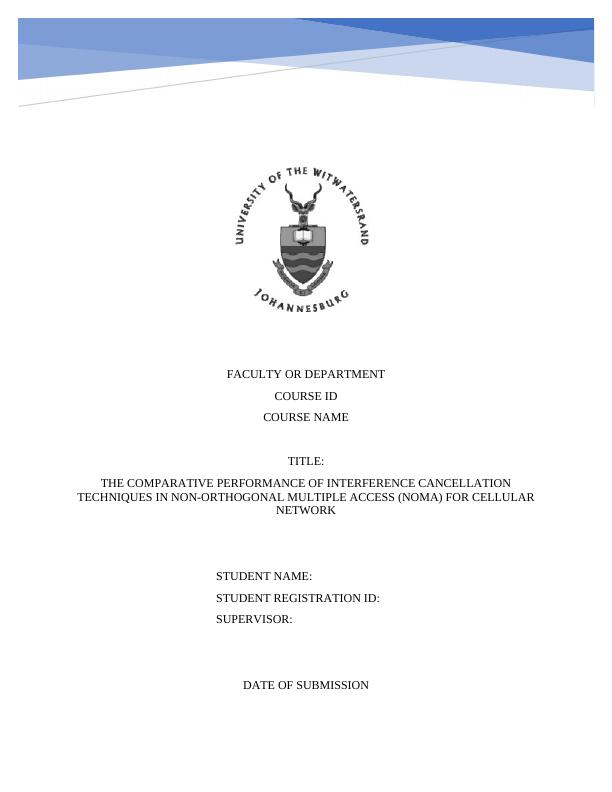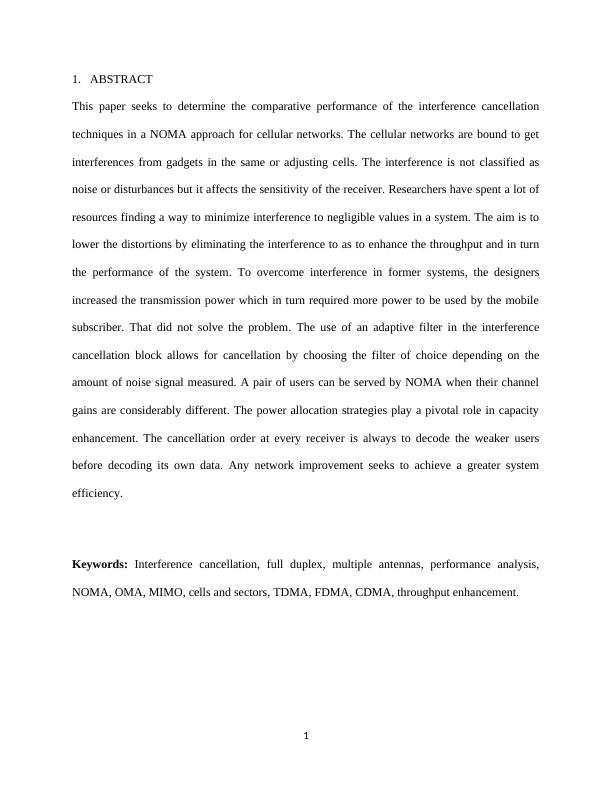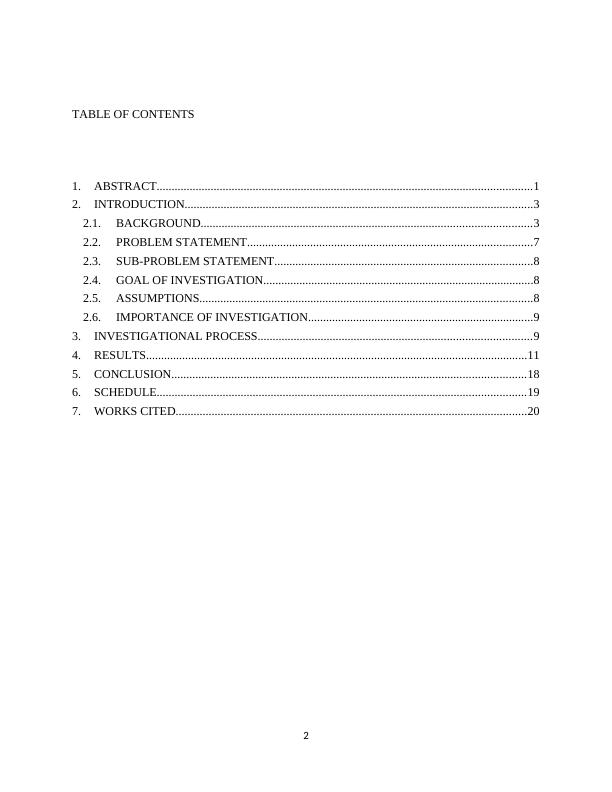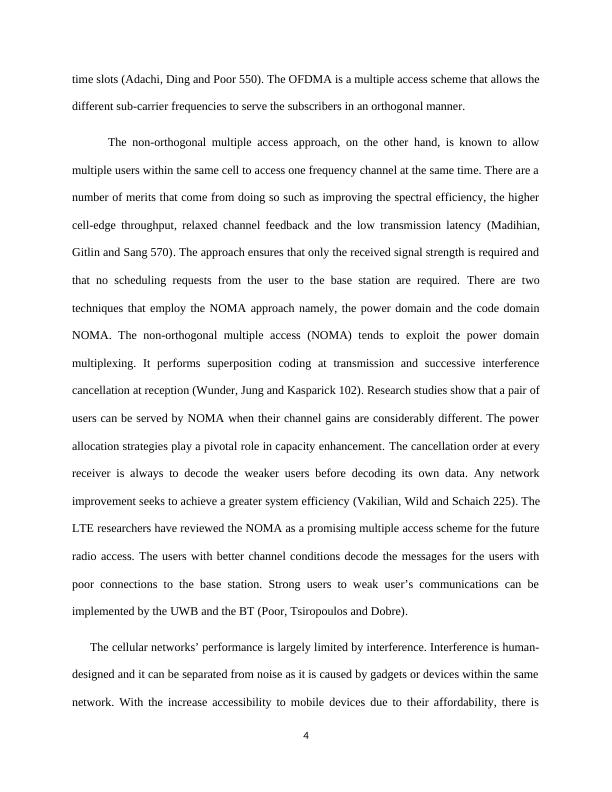Comparative Performance of Interference Cancellation Techniques in NOMA for Cellular Networks
Added on 2023-06-14
23 Pages3580 Words214 Views
FACULTY OR DEPARTMENT
COURSE ID
COURSE NAME
TITLE:
THE COMPARATIVE PERFORMANCE OF INTERFERENCE CANCELLATION
TECHNIQUES IN NON-ORTHOGONAL MULTIPLE ACCESS (NOMA) FOR CELLULAR
NETWORK
STUDENT NAME:
STUDENT REGISTRATION ID:
SUPERVISOR:
DATE OF SUBMISSION
COURSE ID
COURSE NAME
TITLE:
THE COMPARATIVE PERFORMANCE OF INTERFERENCE CANCELLATION
TECHNIQUES IN NON-ORTHOGONAL MULTIPLE ACCESS (NOMA) FOR CELLULAR
NETWORK
STUDENT NAME:
STUDENT REGISTRATION ID:
SUPERVISOR:
DATE OF SUBMISSION

1. ABSTRACT
This paper seeks to determine the comparative performance of the interference cancellation
techniques in a NOMA approach for cellular networks. The cellular networks are bound to get
interferences from gadgets in the same or adjusting cells. The interference is not classified as
noise or disturbances but it affects the sensitivity of the receiver. Researchers have spent a lot of
resources finding a way to minimize interference to negligible values in a system. The aim is to
lower the distortions by eliminating the interference to as to enhance the throughput and in turn
the performance of the system. To overcome interference in former systems, the designers
increased the transmission power which in turn required more power to be used by the mobile
subscriber. That did not solve the problem. The use of an adaptive filter in the interference
cancellation block allows for cancellation by choosing the filter of choice depending on the
amount of noise signal measured. A pair of users can be served by NOMA when their channel
gains are considerably different. The power allocation strategies play a pivotal role in capacity
enhancement. The cancellation order at every receiver is always to decode the weaker users
before decoding its own data. Any network improvement seeks to achieve a greater system
efficiency.
Keywords: Interference cancellation, full duplex, multiple antennas, performance analysis,
NOMA, OMA, MIMO, cells and sectors, TDMA, FDMA, CDMA, throughput enhancement.
1
This paper seeks to determine the comparative performance of the interference cancellation
techniques in a NOMA approach for cellular networks. The cellular networks are bound to get
interferences from gadgets in the same or adjusting cells. The interference is not classified as
noise or disturbances but it affects the sensitivity of the receiver. Researchers have spent a lot of
resources finding a way to minimize interference to negligible values in a system. The aim is to
lower the distortions by eliminating the interference to as to enhance the throughput and in turn
the performance of the system. To overcome interference in former systems, the designers
increased the transmission power which in turn required more power to be used by the mobile
subscriber. That did not solve the problem. The use of an adaptive filter in the interference
cancellation block allows for cancellation by choosing the filter of choice depending on the
amount of noise signal measured. A pair of users can be served by NOMA when their channel
gains are considerably different. The power allocation strategies play a pivotal role in capacity
enhancement. The cancellation order at every receiver is always to decode the weaker users
before decoding its own data. Any network improvement seeks to achieve a greater system
efficiency.
Keywords: Interference cancellation, full duplex, multiple antennas, performance analysis,
NOMA, OMA, MIMO, cells and sectors, TDMA, FDMA, CDMA, throughput enhancement.
1

TABLE OF CONTENTS
1. ABSTRACT.............................................................................................................................1
2. INTRODUCTION....................................................................................................................3
2.1. BACKGROUND..............................................................................................................3
2.2. PROBLEM STATEMENT...............................................................................................7
2.3. SUB-PROBLEM STATEMENT......................................................................................8
2.4. GOAL OF INVESTIGATION..........................................................................................8
2.5. ASSUMPTIONS...............................................................................................................8
2.6. IMPORTANCE OF INVESTIGATION...........................................................................9
3. INVESTIGATIONAL PROCESS...........................................................................................9
4. RESULTS...............................................................................................................................11
5. CONCLUSION......................................................................................................................18
6. SCHEDULE...........................................................................................................................19
7. WORKS CITED.....................................................................................................................20
2
1. ABSTRACT.............................................................................................................................1
2. INTRODUCTION....................................................................................................................3
2.1. BACKGROUND..............................................................................................................3
2.2. PROBLEM STATEMENT...............................................................................................7
2.3. SUB-PROBLEM STATEMENT......................................................................................8
2.4. GOAL OF INVESTIGATION..........................................................................................8
2.5. ASSUMPTIONS...............................................................................................................8
2.6. IMPORTANCE OF INVESTIGATION...........................................................................9
3. INVESTIGATIONAL PROCESS...........................................................................................9
4. RESULTS...............................................................................................................................11
5. CONCLUSION......................................................................................................................18
6. SCHEDULE...........................................................................................................................19
7. WORKS CITED.....................................................................................................................20
2

2. INTRODUCTION
2.1. BACKGROUND
The cellular network has evolved all the way from 1G to 4G or LTE network. The 5G
network is still under research and is expected to roll out by the year 2020. Some of the
improvements the network seeks to have are based on the significant reduction of the end-to-end
latency (Kishiyama, Benjebbour and Ishii 475). The innovations in the industry have led to a
great need for high data rate applications due to the use of IoT and the mobile internet. For
instance, the 5G network is expected to provide speeds of up to ten to twenty times the peak data
rate in 4G networks (Riazul Islam, Avazov and Dobre). The latency that is attributed to the end-
to-end round-trip delay is expected to reduce to about 1 millisecond. When compared to the 4G
network, it rates at about one-fifth of the LTE latency (Kishiyama, Saito and Benjebbour 477).
The cellular network is founded on the radio access technology which simulates a radio access
network. The RAN uses channels in providing the mobile terminals with a connection to the core
network. The system capacity needs to be improved by designing and implementing suitable
multiple access techniques. These techniques can be stated under two different approaches as
orthogonal multiple access and non-orthogonal multiple access (Haci, Wang and Zhu 5). The
orthogonal technique has different basis functions that enable the receiver to separate, in entirety,
the wanted signals from the unwanted signals. It is easier explained that when different users
send their message signals, these signals tend to be orthogonal to each other (Saito, Benjebbour
and Kishiyama 772). Some of the common schemes implemented under this approach include
the Time Division Multiple Access and the Orthogonal Frequency Division Multiple Access.
The TDMA allows several users to share the same frequency channel by sharing the assigned
3
2.1. BACKGROUND
The cellular network has evolved all the way from 1G to 4G or LTE network. The 5G
network is still under research and is expected to roll out by the year 2020. Some of the
improvements the network seeks to have are based on the significant reduction of the end-to-end
latency (Kishiyama, Benjebbour and Ishii 475). The innovations in the industry have led to a
great need for high data rate applications due to the use of IoT and the mobile internet. For
instance, the 5G network is expected to provide speeds of up to ten to twenty times the peak data
rate in 4G networks (Riazul Islam, Avazov and Dobre). The latency that is attributed to the end-
to-end round-trip delay is expected to reduce to about 1 millisecond. When compared to the 4G
network, it rates at about one-fifth of the LTE latency (Kishiyama, Saito and Benjebbour 477).
The cellular network is founded on the radio access technology which simulates a radio access
network. The RAN uses channels in providing the mobile terminals with a connection to the core
network. The system capacity needs to be improved by designing and implementing suitable
multiple access techniques. These techniques can be stated under two different approaches as
orthogonal multiple access and non-orthogonal multiple access (Haci, Wang and Zhu 5). The
orthogonal technique has different basis functions that enable the receiver to separate, in entirety,
the wanted signals from the unwanted signals. It is easier explained that when different users
send their message signals, these signals tend to be orthogonal to each other (Saito, Benjebbour
and Kishiyama 772). Some of the common schemes implemented under this approach include
the Time Division Multiple Access and the Orthogonal Frequency Division Multiple Access.
The TDMA allows several users to share the same frequency channel by sharing the assigned
3

time slots (Adachi, Ding and Poor 550). The OFDMA is a multiple access scheme that allows the
different sub-carrier frequencies to serve the subscribers in an orthogonal manner.
The non-orthogonal multiple access approach, on the other hand, is known to allow
multiple users within the same cell to access one frequency channel at the same time. There are a
number of merits that come from doing so such as improving the spectral efficiency, the higher
cell-edge throughput, relaxed channel feedback and the low transmission latency (Madihian,
Gitlin and Sang 570). The approach ensures that only the received signal strength is required and
that no scheduling requests from the user to the base station are required. There are two
techniques that employ the NOMA approach namely, the power domain and the code domain
NOMA. The non-orthogonal multiple access (NOMA) tends to exploit the power domain
multiplexing. It performs superposition coding at transmission and successive interference
cancellation at reception (Wunder, Jung and Kasparick 102). Research studies show that a pair of
users can be served by NOMA when their channel gains are considerably different. The power
allocation strategies play a pivotal role in capacity enhancement. The cancellation order at every
receiver is always to decode the weaker users before decoding its own data. Any network
improvement seeks to achieve a greater system efficiency (Vakilian, Wild and Schaich 225). The
LTE researchers have reviewed the NOMA as a promising multiple access scheme for the future
radio access. The users with better channel conditions decode the messages for the users with
poor connections to the base station. Strong users to weak user’s communications can be
implemented by the UWB and the BT (Poor, Tsiropoulos and Dobre).
The cellular networks’ performance is largely limited by interference. Interference is human-
designed and it can be separated from noise as it is caused by gadgets or devices within the same
network. With the increase accessibility to mobile devices due to their affordability, there is
4
different sub-carrier frequencies to serve the subscribers in an orthogonal manner.
The non-orthogonal multiple access approach, on the other hand, is known to allow
multiple users within the same cell to access one frequency channel at the same time. There are a
number of merits that come from doing so such as improving the spectral efficiency, the higher
cell-edge throughput, relaxed channel feedback and the low transmission latency (Madihian,
Gitlin and Sang 570). The approach ensures that only the received signal strength is required and
that no scheduling requests from the user to the base station are required. There are two
techniques that employ the NOMA approach namely, the power domain and the code domain
NOMA. The non-orthogonal multiple access (NOMA) tends to exploit the power domain
multiplexing. It performs superposition coding at transmission and successive interference
cancellation at reception (Wunder, Jung and Kasparick 102). Research studies show that a pair of
users can be served by NOMA when their channel gains are considerably different. The power
allocation strategies play a pivotal role in capacity enhancement. The cancellation order at every
receiver is always to decode the weaker users before decoding its own data. Any network
improvement seeks to achieve a greater system efficiency (Vakilian, Wild and Schaich 225). The
LTE researchers have reviewed the NOMA as a promising multiple access scheme for the future
radio access. The users with better channel conditions decode the messages for the users with
poor connections to the base station. Strong users to weak user’s communications can be
implemented by the UWB and the BT (Poor, Tsiropoulos and Dobre).
The cellular networks’ performance is largely limited by interference. Interference is human-
designed and it can be separated from noise as it is caused by gadgets or devices within the same
network. With the increase accessibility to mobile devices due to their affordability, there is
4

more interference within the cellular network. Some methods have been devised to reduce
interference, for instance, the designers of the base station tend to achieve a minimum required
transmission power rate so that the same low power can be transmitted or received by the
different gadgets within a cell (Dong, Dong and Feng 3). As a result, there is less interference
caused to other devices in the network (Creative World 9). The use of NOMA is a progressive
move from the time, frequency and code domains. In the current technologies, the receiver uses
rake receiver to detect and minimize interference. The use of NOMA approach has led
researchers to attempt enhancements on the performance of other technologies in the cellular
network family. These networks are such as the multiple-input multiple-output networks,
cooperative communication networks, light communications as well as the relay communication
networks. Some of the common schemes under NOMA are as shown below,
Figure 1 A simple classification of NOMA techniques
There are two basic techniques that play an important role in the comprehension of the
class of NOMA, specifically the power domain NOMA. The superposition coding is a technique
of simultaneously communicating information to several receivers by a single source. The SC
5
interference, for instance, the designers of the base station tend to achieve a minimum required
transmission power rate so that the same low power can be transmitted or received by the
different gadgets within a cell (Dong, Dong and Feng 3). As a result, there is less interference
caused to other devices in the network (Creative World 9). The use of NOMA is a progressive
move from the time, frequency and code domains. In the current technologies, the receiver uses
rake receiver to detect and minimize interference. The use of NOMA approach has led
researchers to attempt enhancements on the performance of other technologies in the cellular
network family. These networks are such as the multiple-input multiple-output networks,
cooperative communication networks, light communications as well as the relay communication
networks. Some of the common schemes under NOMA are as shown below,
Figure 1 A simple classification of NOMA techniques
There are two basic techniques that play an important role in the comprehension of the
class of NOMA, specifically the power domain NOMA. The superposition coding is a technique
of simultaneously communicating information to several receivers by a single source. The SC
5

End of preview
Want to access all the pages? Upload your documents or become a member.
Related Documents
5G mobile technology Paper 2022lg...
|6
|5536
|16
Evaluation of 5G Network and the Security Issues 2022lg...
|13
|3931
|28
Components of a 5G Network Systems Research Paper 2022lg...
|4
|1310
|18
5G Network: Architecture and Emerging Technologieslg...
|27
|22798
|222
5G New Radio in Wireless Communicationlg...
|12
|3714
|455
Heterogeneous Networks: Challenges and Solutions in mmWave Communicationslg...
|10
|4404
|207
